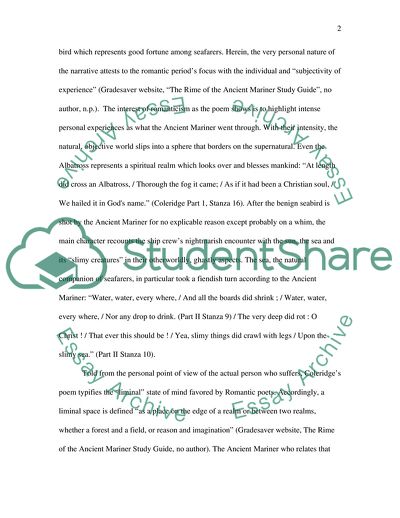Literary analysis of The Rime of the Ancient Mariner by Samuel Literature review Example | Topics and Well Written Essays - 1250 words. https://studentshare.org/literature/1707198-literary-analysis-of-the-rime-of-the-ancient-mariner-by-samuel-coleridge
Literary Analysis of The Rime of the Ancient Mariner by Samuel Literature Review Example | Topics and Well Written Essays - 1250 Words. https://studentshare.org/literature/1707198-literary-analysis-of-the-rime-of-the-ancient-mariner-by-samuel-coleridge.


